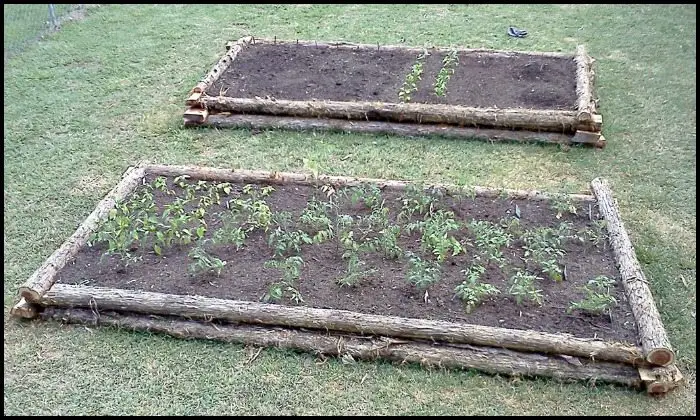Thinking of growing your own produce? Raised garden beds come with some significant advantages including ease of access and great drainage. An easy way to make them is with logs.
Raised garden bed from logs are loved by many gardeners because they make gardening easier! The raised beds keep plants away from low-lying weeds, keep the soil warmer and make tending a little less painful on the backs and knees of us gardeners.
Logs can act as a barrier to weeds and encroachments from surrounding areas, making it easier to maintain a weed-free garden. Raised garden beds from logs can be more challenging for pests like ground-dwelling insects and rodents to access. Logs can add an extra layer of protection against burrowing pests.
And as they decompose over time, they contribute organic matter to the soil, enriching its fertility. They are a renewable resource, and having a raised garden bed from logs aligns with eco-friendly practices. Logs provide a unique and attractive design element to your garden, creating a focal point that stands out among traditional garden beds.
Best of all, a raised garden bed from logs not only provides practical advantages but also adds a touch of natural beauty and charm to your outdoor space.
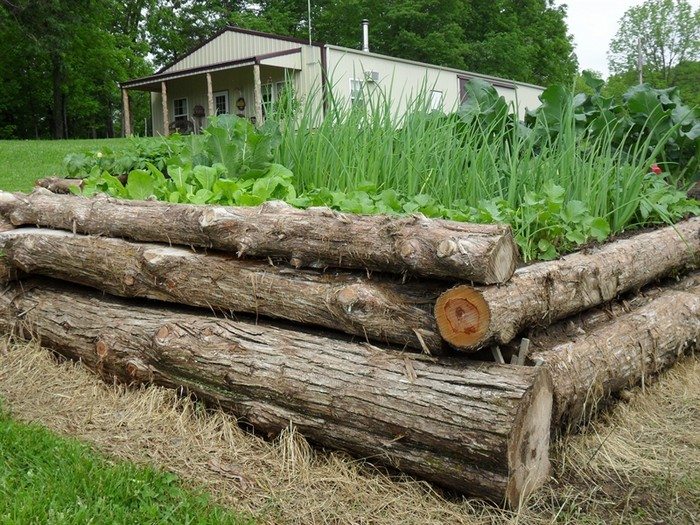
There are many materials you can choose from when making your raised garden bed. But logs are one of the better options because they’re strong, stable, and very simple to build with. If you want to make sure you have a long-lasting garden bed use cedar. It makes a great log-raised garden bed because it is durable and naturally rot-resistant!

In Australia, consider using Cypress pine which is both termite and rot-resistant.
While treated logs are claimed to be safe, it is advisable that you avoid them since the original copper arsenic logs were also once said to be safe :(
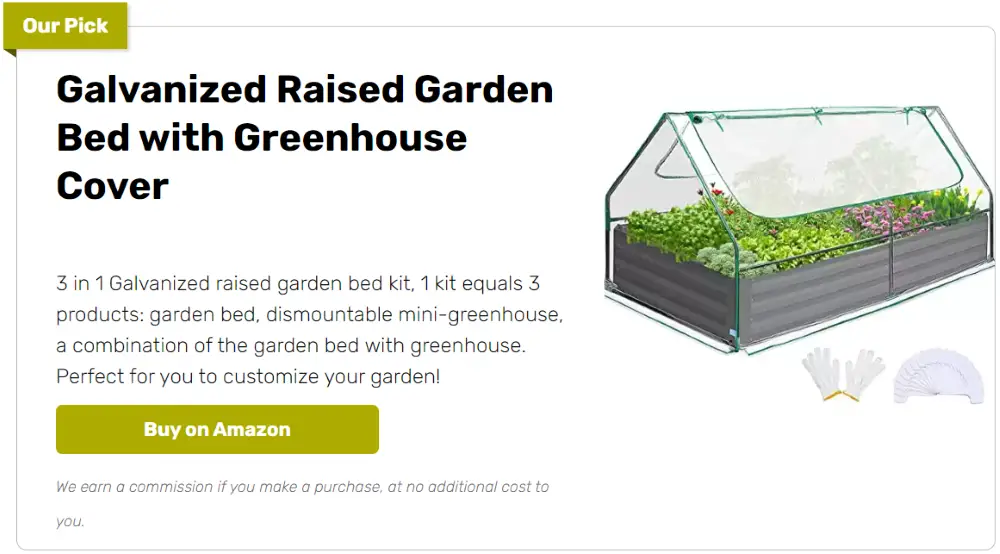
Do you think a raised garden bed from logs fits your yard? Take a look at our album of different garden beds with logs below and learn how to build one from SFGate’s tutorial!
Contents
- 1 How to Make Your Own Raised Garden Bed From Logs
- 2 Maintaining Your Raised Garden Bed From Logs
- 3 Choosing the Right Logs for Your Garden Bed
- 4 FAQ on Raised Garden Bed from Logs
- 4.1 What are the benefits of using logs for a raised garden bed?
- 4.2 How do I choose the right logs for my raised garden bed from logs?
- 4.3 Can I use any type of wood for my raised garden bed from logs?
- 4.4 How do I maintain my raised garden bed from logs?
- 4.5 Do I need to treat the logs before using them in my raised garden bed?
- 4.6 How long will a raised garden bed from logs last?
- 4.7 Can I expand my raised garden bed from logs in the future?
- 4.8 Is it possible to create a raised garden bed from logs on a budget?
- 5 Summary
How to Make Your Own Raised Garden Bed From Logs
Embrace the natural charm of rustic gardening. In this tutorial, explore the art of creating a beautiful and sustainable raised garden bed from logs, bringing a touch of woodland magic to your outdoor space.
Whether you’re an experienced gardener or a newcomer to the world of horticulture, this step-by-step approach will empower you to craft a garden that not only flourishes but also exudes timeless elegance.
Ready to embark on a journey of creativity and eco-consciousness? Watch your gardening dreams thrive amidst the natural beauty of logs.
To get started, gather the essential materials and tools for crafting a raised garden bed from logs.
Materials
- 8×8′ Logs
- Cardboard
- 24 pcs Rebar
- Landscaping Fabric
- Garden Soil
Tools
- Shovel
- Drill
- Staple Gun
Click on any image to start the lightbox display. Use your Esc key to close the lightbox.
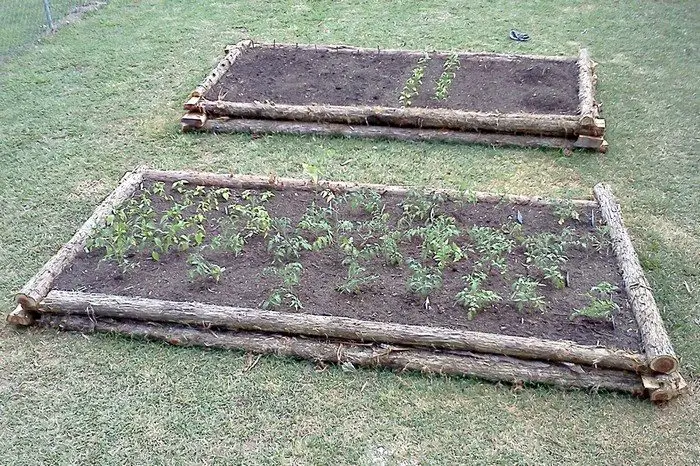
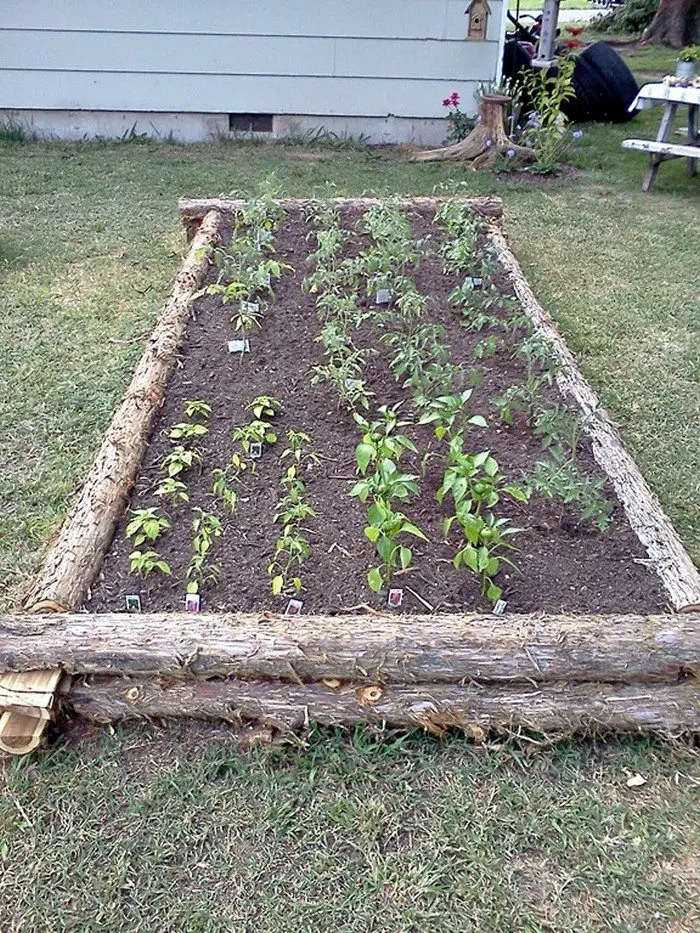
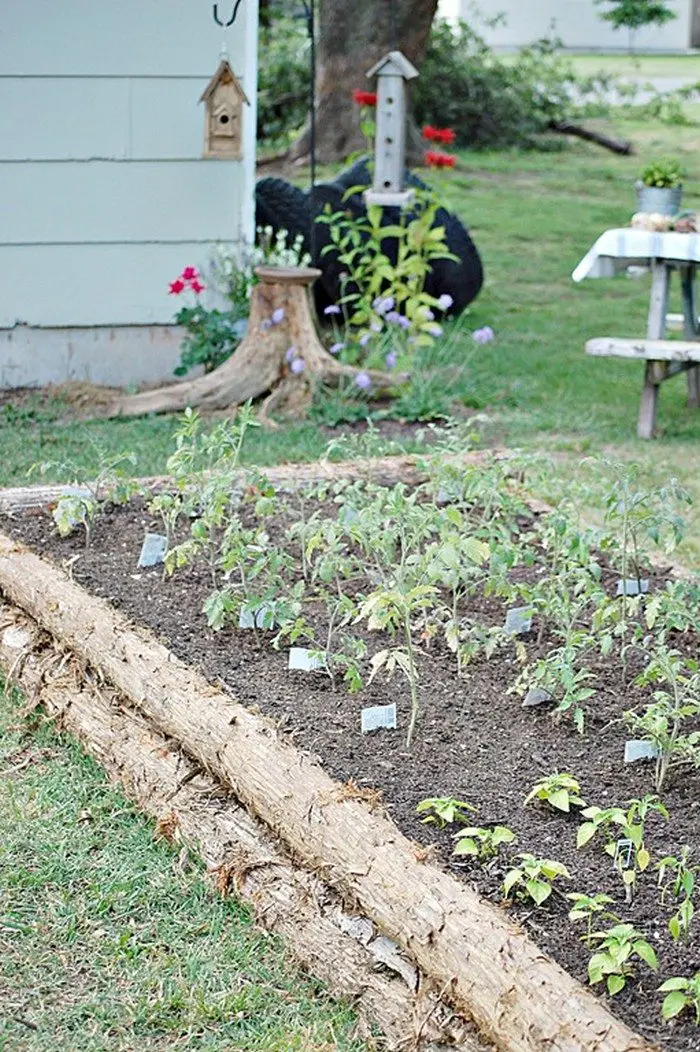







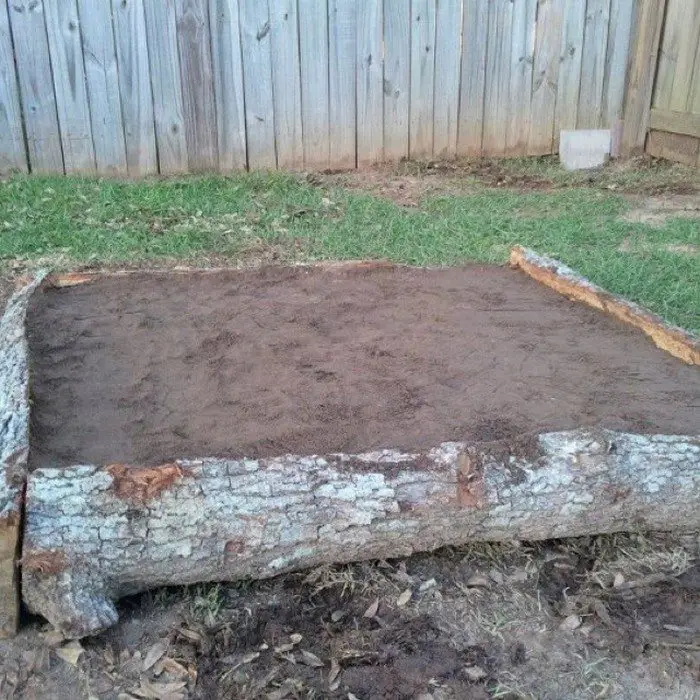

Steps
Step 1: Choose the Location
- Select a suitable location in your garden for the raised bed. Ensure it receives adequate sunlight and has good drainage.
Step 2: Measure and Mark
- Measure and mark the dimensions for your raised bed using the 8×8′ logs. Consider the size and shape you desire for your garden bed.
Step 3: Clear the Area
- Use a shovel to clear the marked area of any debris, rocks, or weeds.
Step 4: Lay Cardboard
- Lay cardboard on the ground within the marked area. This will act as a weed barrier and protect the logs from direct contact with the soil.
Step 5: Assemble the Logs
- Begin assembling the logs by stacking them on top of the cardboard. Make sure they fit together securely and create the desired height for your raised bed.
Step 6: Secure the Logs
- Use rebar to secure the logs together at the corners. Drill holes through the logs and insert the rebar to hold them firmly in place.
Step 7: Line With Landscaping Fabric
- Line the interior sides of the raised bed with landscaping fabric. This prevents soil from seeping out between the logs while promoting proper drainage.
Step 8: Fill With Garden Soil
- Fill the raised bed with quality garden soil. Ensure it’s evenly distributed and levelled.
Step 9: Plant Your Garden
- Plant your choice of vegetables, herbs, or other plants in the raised bed according to your gardening plan.
Step 10: Water and Maintain
- Water your plants as needed and maintain your garden bed by weeding and ensuring proper care for your growing plants.
Your raised garden bed from logs is now ready to provide a natural and charming space for your plants to flourish. Enjoy the beauty and functionality of this eco-friendly garden bed.
Thanks to SFGate for sharing invaluable ideas on how to make a raised garden bed from logs.
Maintaining Your Raised Garden Bed From Logs
Maintaining your raised garden bed from logs is crucial for extending its life and ensuring your garden thrives. Here are some tips to keep your raised garden bed from logs in great shape.
Regular Inspection and Log Replacement
To ensure the longevity and aesthetic appeal of your raised garden bed from logs, it is essential to conduct regular inspections. Look out for signs of wear, such as splitting, rotting, or any form of decay in the logs.
These issues, if left unattended, can compromise the structural integrity and overall look of your raised garden bed from logs. Promptly replacing damaged logs not only helps to preserve the structure and appearance but also prevents potential issues from worsening.
This maintenance step is crucial for keeping your raised garden bed from logs both sturdy and visually appealing. By taking proactive measures to replace logs when necessary, you ensure that your raised garden bed from logs remains a focal point in your garden, showcasing its natural beauty and durability.
Enhancing Soil Fertility
The soil contained within your raised garden bed from logs plays a pivotal role in the health and vigor of your plants. To maintain and enhance the fertility of this soil, it’s recommended to add compost or organic matter on an annual basis. This addition of nutrients is crucial for replenishing the soil in your raised garden bed from logs, ensuring it remains rich and conducive to plant growth.
Compost not only introduces essential nutrients but also improves soil structure, water retention, and aeration. These benefits collectively support robust plant growth, making your raised garden bed from logs a thriving environment for a variety of plants. By prioritizing soil fertility through the addition of compost or organic matter, you can boost the productivity and health of your raised garden bed from logs, leading to a bountiful and beautiful garden display.
Efficient Watering Techniques
Effective watering is a cornerstone for the success of your raised garden bed from logs. To ensure that your plants receive the moisture they need without wasting water or endangering the integrity of the logs, adopting efficient watering techniques is key.
Drip irrigation systems and soaker hoses are ideal for this purpose. These methods deliver water directly to the base of the plants, where it’s most needed, reducing evaporation and runoff.
For your raised garden bed from logs, these watering techniques also have the added benefit of keeping water away from the logs themselves, significantly reducing the risk of wood decay over time. By implementing these efficient watering practices, you not only promote the health and productivity of your plants in the raised garden bed from logs but also contribute to the preservation and longevity of the log structure itself.
Applying Mulch
Mulching plays a critical role in the upkeep and efficiency of your raised garden bed from logs. By applying a generous layer of mulch over the soil, you achieve several benefits that contribute to the well-being of your garden.
Firstly, mulch helps to retain soil moisture, reducing the need for frequent watering and ensuring that plants stay hydrated. This is particularly beneficial during hot or dry periods, making your raised garden bed from logs more drought-resistant.
Secondly, mulch suppresses weed growth, which competes with your plants for nutrients and water. A weed-free environment means your plants can thrive without competition.
Thirdly, as the mulch slowly decomposes, it enriches the soil with organic matter, enhancing its structure and fertility. Moreover, mulch acts as a barrier between the soil and the logs in your raised garden bed, minimizing direct contact with moisture and thus prolonging the life of the logs by reducing rot risk.
By applying mulch to your raised garden bed from logs, you’re not only promoting a healthier, more productive garden but also protecting and extending the durability of the log structure.
Managing Pests and Diseases
Effective management of pests and diseases is crucial for maintaining the health and productivity of your raised garden bed from logs. Regular monitoring is the first step in this process. Keep an eye out for the early signs of insect infestation or disease in your plants.
Early detection can make a significant difference in your ability to control these issues effectively. Once a problem is identified, adopting organic control methods is a sustainable and environmentally friendly approach. This could include the use of natural predators, such as ladybugs for aphid control, or applying organic pesticides like neem oil that are less harmful to beneficial insects and the ecosystem.
Maintaining a clean garden by removing debris and diseased plant material also helps prevent the spread of pests and diseases. By employing these organic control strategies, you ensure that your raised garden bed from logs remains a vibrant and healthy environment for your plants to flourish.
Crop Rotation
Crop rotation is a time-tested agricultural practice that is particularly effective in managing soil health and reducing the incidence of soil-borne pests and diseases in your raised garden bed from logs. By changing the types of crops grown in a specific area of your raised garden bed from logs each season or year, you can break the life cycles of pests and interrupt the build-up of diseases that occur when the same family of plants is grown repeatedly in the same soil. For example, following a leafy green vegetable with a root crop can help balance nutrient usage in the soil, as different plants have different nutrient needs and contributions.
This practice not only prevents the depletion of specific nutrients but also discourages pests and diseases associated with specific crops from becoming established. Incorporating crop rotation into the management of your raised garden bed from logs promotes a diverse and balanced ecosystem, leading to healthier soil and more productive plants.
Choosing the Right Logs for Your Garden Bed
Selecting the right logs for your raised garden bed from logs is a critical step in creating a durable and aesthetically pleasing garden area. The type of wood you choose can affect the longevity of the bed, its resistance to decay, and how it integrates with your garden’s overall design.
Here are key considerations to help you choose the best logs for your raised garden bed.
Consider Wood Durability
When choosing logs for your raised garden bed from logs, opt for woods known for their durability and resistance to rot. Cedar and redwood are popular choices due to their natural rot-resistant properties, making them ideal for outdoor use. These woods can last for years, providing a stable and attractive framework for your plants.
Sustainability Matters
Selecting logs from sustainably harvested sources is crucial for environmentally conscious gardeners. Look for logs that have been certified by reputable organizations such as the Forest Stewardship Council (FSC). Using sustainable logs for your raised garden bed from logs not only supports responsible forestry practices but also adds an eco-friendly element to your gardening efforts.
Local Availability and Cost
Consider the availability and cost of different types of logs in your area. Locally sourced logs can reduce transportation costs and support your local economy. Additionally, choosing logs that are readily available in your region can make the construction of your raised garden bed from logs more cost-effective and feasible.
Avoid Treated Woods
While treated logs may offer increased durability against rot and pests, they can contain chemicals that are harmful to plants and the environment. For a raised garden bed from logs, it’s advisable to avoid using treated wood, especially if you plan to grow edible plants. Natural, untreated logs are the safest choice for your garden and the health of your family.
FAQ on Raised Garden Bed from Logs
What are the benefits of using logs for a raised garden bed?
Using logs for a raised garden bed from logs offers several benefits, including natural aesthetics, durability, and improved soil drainage and temperature regulation. Logs also provide a barrier against pests and can contribute organic matter to the soil as they decompose.
How do I choose the right logs for my raised garden bed from logs?
When selecting logs for your raised garden bed from logs, opt for durable, rot-resistant woods like cedar or redwood. Ensure the logs are untreated to avoid chemicals leaching into the soil, especially if you’re growing edible plants. Consider local availability and sustainability as well.
Can I use any type of wood for my raised garden bed from logs?
Not all wood types are suitable for a raised garden bed from logs. It’s best to avoid woods that rot quickly or are treated with chemicals. Cedar, redwood, and cypress are excellent choices due to their natural resistance to decay.
How do I maintain my raised garden bed from logs?
Maintain your raised garden bed from logs by inspecting and replacing any decayed logs, adding compost to enrich the soil annually, using efficient watering techniques, mulching to conserve moisture, and practicing crop rotation to prevent soil-borne diseases.
Do I need to treat the logs before using them in my raised garden bed?
It’s recommended to use untreated logs for your raised garden bed from logs, especially for edible gardens, to avoid chemicals leaching into the soil. Natural, rot-resistant woods like cedar and redwood are ideal and don’t require treatment.
How long will a raised garden bed from logs last?
The lifespan of a raised garden bed from logs depends on the type of wood used and the conditions it’s exposed to. Durable woods like cedar and redwood can last several years before needing replacement, especially with proper maintenance.
Can I expand my raised garden bed from logs in the future?
Yes, you can expand your raised garden bed from logs by adding more logs to increase the bed’s size or height. Ensure the new logs match the existing ones in material and treatment to maintain a cohesive and functional garden bed.
Is it possible to create a raised garden bed from logs on a budget?
Creating a raised garden bed from logs can be budget-friendly, especially if you source local, sustainably harvested logs or repurpose fallen trees. Choosing locally available and cost-effective wood types can also help manage expenses.
Summary
Embrace the natural charm of gardening with the raised garden bed from logs. This comprehensive guide invites you to craft a rustic haven for your plants, seamlessly blending nature with functionality. Whether you’re an experienced gardener or just starting your green journey, the step-by-step approach empowers you to construct a raised garden bed using logs, adding a touch of woodland magic to your outdoor space.
This raised garden bed from logs serves as an excellent introduction to gardening techniques and outdoor creativity. It’s a chance to learn and grow your skills while cultivating a sustainable and visually captivating garden space. It’s also a garden bed that combines the timeless allure of logs with the functional elegance of raised gardening.
Say goodbye to conventional gardening and welcome the beauty of logs as you nurture your plants in an eco-friendly and visually captivating haven. Embark on this enchanting journey where your gardening dreams can thrive.
Within this raised garden bed from logs, you’ll find a space to connect with the earth, nurture your plants, and let your imagination bloom. This is where your gardening aspirations start to flourish, and where the whispers of the woods become the backdrop to your thriving green haven.
For more ways to boost the look of your outdoor space, check out our garden paths projects next!

